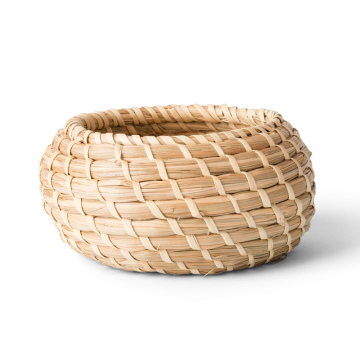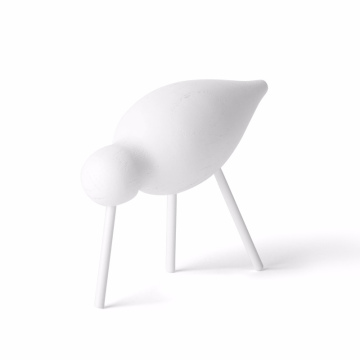A Culinary Journey: Discovering the Art of Japanese Ramen
Introduction to Ramen: A Cultural Icon
Ramen, a dish synonymous with Japanese cuisine, boasts a history that intertwines with cultural exchange and innovation. Originally introduced from China in the late 19th century, ramen began as a humble noodle soup, taking root in Japanese society during the Meiji Era. Over the decades, it has transcended its initial status to become an iconic culinary staple, reflecting the richness of Japanese food culture.
The evolution of ramen is marked by regional adaptations that showcase the diversity of flavors and techniques across Japan. Each region has not only embraced ramen but has also infused it with local ingredients and culinary practices. For instance, the Sapporo style is renowned for its rich miso-based broth, while Tonkotsu ramen from Fukuoka is celebrated for its creamy, pork-bone broth that offers players a complex taste experience. Other regional variations, such as Shoyu ramen with its soy sauce base and Shio ramen, which emphasizes the pure flavor of salt, demonstrate the breadth of possibilities within this single dish.
Ramen's journey from its origins to its current status also reflects Japan's broader historical narratives, encompassing themes such as modernization, globalization, and culinary fusion. Notably, the post-World War II era saw ramen emerge as an affordable and accessible food option, paving the way for its proliferation across the country. The creation of instant ramen in the 1950s further propelled its popularity, allowing it to permeate international markets and become a global phenomenon.
Thus, ramen stands as a cultural icon, symbolizing not just a meal but also the melding of traditions, tastes, and local identities. The continued innovation surrounding ramen ensures its relevance in contemporary culinary discourse, making it a subject of fascination for both chefs and food enthusiasts alike.
Choosing the Right Ramen Shop: Tips for an Authentic Experience
When seeking an authentic ramen experience, it is essential to be discerning in your selection of a ramen shop. Various factors contribute to the quality and authenticity of the ramen you will enjoy. One significant element to consider is the type of broth used in the ramen. Authentic ramen establishments often specialize in a specific broth style, such as shoyu (soy sauce), shio (salt), tonkotsu (pork bone), or miso. Observing the menu for a clear concentration on one type can indicate the chef’s expertise and commitment to that style.
The quality of the noodles is another critical aspect of an authentic ramen experience. Premium ramen noodles should possess the right texture—firm yet supple, with a pleasant bite. Shops that make their noodles in-house or source them from reputable suppliers often prioritize freshness, which is key to enhancing the dish’s overall flavor. Pay attention to the subtle differences in noodle thickness and shape, as these can vary by region and noodle-making tradition.
The ambiance of a ramen shop can also provide insights into its authenticity. A bustling atmosphere, aromatic smells, and an engaged staff often reflect genuine passion for the cuisine. Whether the shop is small and unpretentious or more upscale, the atmosphere should invite you to immerse yourself in the ramen experience. Additionally, exploring popular ramen districts, such as Shinjuku in Tokyo or Nakazakicho in Osaka, can lead you to hidden gems and renowned establishments. Each area boasts its unique features—be it traditional shops or innovative takes on classic dishes. In these districts, proactive exploration will reward you with unforgettable ramen experiences alongside must-try recommendations from locals.
The Ramen Experience: From Ordering to Eating
Embarking on a ramen dining experience begins the moment one steps into a traditional ramen shop. These establishments often have a distinctive atmosphere that reflects Japanese culture, creating an inviting environment for newcomers and seasoned diners alike. Upon entering, patrons will typically encounter a vending machine at the entrance, offering a variety of ramen options and customization choices. This automated system presents an efficient way to place an order, allowing one to select their desired bowl of ramen, toppings, and even side dishes with just a few button presses.
Once the order is placed, guests will receive a ticket that must be presented to the staff behind the counter. Alternatively, some ramen shops eschew this process, allowing diners to order directly from a staff member. Regardless of the method, it is generally encouraged to be polite and courteous during the ordering process, as such manners are highly valued in Japanese culture.
When the highly anticipated bowl of ramen arrives at the table, it is essential to appreciate its presentation. The bowl typically features a rich, fragrant broth topped with an array of ingredients, including chashu (braised pork), menma (bamboo shoots), and green onions. It is acceptable to take a moment to admire the artistry before diving in. A fundamental aspect of enjoying ramen is the technique of slurping the noodles, which not only enhances the flavor but is also a sign of appreciation for the meal.
Furthermore, it is beneficial to savor each component of the ramen bowl. One can start by tasting the broth, then shift focus to the noodles, and finally relish the toppings. Engaging with each element of the dish allows for a nuanced appreciation of the flavors and textures that ramen offers. By understanding and embracing the culture surrounding ramen, diners can enhance their overall experience and gain deeper insight into one of Japan's most beloved culinary traditions.
Pairing Ramen with Complementary Dishes and Beverages
Ramen, a beloved staple of Japanese cuisine, is not just a dish to enjoy on its own; it can be elevated into a complete culinary experience when paired with the right side dishes and beverages. To fully appreciate the rich flavors and textures of ramen, consider incorporating traditional accompaniments that enhance its profile. One popular side dish is gyoza, Japanese dumplings that can be either steamed or pan-fried, featuring a savory filling that beautifully contrasts with the noodles in your ramen bowl. The crispy exterior of gyoza provides a delightful crunch, making each bite a textural delight.
Another classic option to consider is tempura, which consists of lightly battered and fried vegetables or seafood. The lightness of tempura pairs exceptionally well with the heartiness of ramen, offering a fresh, crispy side that complements the broth without overwhelming the palate. For those looking for a more adventurous pairing, consider enlisting tsukemono, or pickled vegetables, which deliver a zesty crunch that enhances the umami notes in your ramen.
In addition to side dishes, the choice of beverage plays a crucial role in overall meal satisfaction. Traditional beverages like sake, a rice wine, can be an excellent pairing with ramen, as its smooth flavor profile enhances the broth’s richness. Another popular option is Japanese beer, often characterized by its light and crisp nature, which serves as a refreshing contrast to the savory notes of the ramen. For those who prefer non-alcoholic choices, matcha tea or chilled green tea can cleanse the palate and elevate the tasting experience.
Experimenting with various toppings can also offer a customized touch to your ramen bowls. Adding items like soft-boiled eggs, sautéed mushrooms, or fresh herbs can dynamically alter the flavor profile, making each bowl unique. The versatile nature of ramen makes it a perfect dish for exploring different combinations of sides and drinks, ensuring your culinary adventure continues beyond just the bowl.





